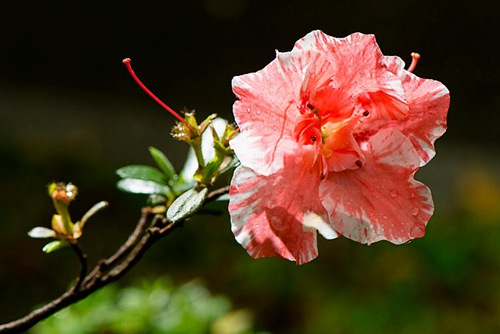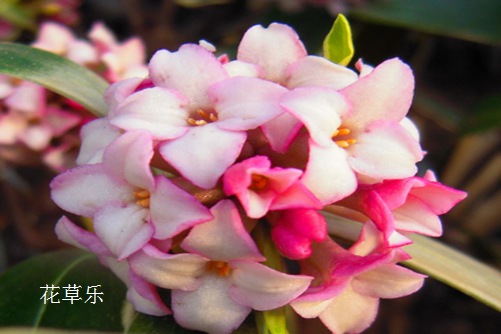Identification and control methods of 11 common insect pests in flowers and plants in spring
Nowadays, it is a good time for flowers to bloom in spring, everything to recover, and potted plants to grow. All kinds of flowers and plants begin to sprout and recover, and this season is also a period of high incidence of various pests. If there is no immediate prevention and control, the bonsai of flowers and plants and the most obvious foliage plants are infected with diseases and insect pests. It will bring a great threat to the growth and survival of flowers and plants. Flowers and plants suffer from insect pests. Do you know what kind of diseases and insect pests they are? What are the methods of pest control? Below Huacaole shares with you 11 common pest control and pest identification methods for flowers and plants in spring.
Identification and control methods of 11 common insect pests in flowers and plants in spring

I. Control of 11 kinds of diseases and insect pests of flowers and plants
1. Scale insects
There are many species of scale insects, which are round or oval in shape with a waxy shell. The former is about 3~3.5mm in diameter, while the latter is about 2mm and wide 1mm. When the quantity is small, it is parasitic near the thorn seat or in the leaf back and leaf sheath. When the quantity is large, the stems, branches and leaves are parasitic everywhere and absorb plant nutrients. The harmful varieties are Cactaceae, Euphorbiaceae, Liliaceae, Amygdaceae, jade type and so on. Scale insects reproduce rapidly, each adult lays nearly 100 eggs at a time, twice a year, the eggs are powdery, after drying and cracking, they float with the wind and are scattered on the stems and leaves of plants everywhere.
Treatment: when the number of insects is small, brush or bamboo pieces are used to manually brush or cut off the damaged branches and leaves and burn them centrally. When there are many insects, you can use 1 cigarette butt and 1 cigarette ash, add 40 ~ 50 parts of water, soak for 1 day and night, smash and filter and spray, which has a certain effect on the newly hatched scale insects. Or buy carbendazim spray.
2. Snails
Snails are divided into shelled species and shellless species. He sleeps during the day and goes out at night, hiding in damp and dark places during the day, and then comes out to look for food at night. He eats not only young branches and leaves, but also old stems and leaves.
Treatment: remove weeds, rubbish, tiles and other deposits around the pot, and buy specific drugs to kill snails, such as Meituoer, Naomeike, slug and so on.
3. Red spider
The red spider is about 0.5mm in diameter, fast in crawling speed, small in size and difficult to find. It often gathers in groups and gnaws on the epidermis of stems and leaves, making the injured place mottled and rough, which is indecent white or yellow. Red spiders reproduce rapidly during the drying period, and foliar spray can restrain the damage. The harmful flowers are Cactus, Amygdaceae, Euphorbiaceae, Liliaceae and so on.
Treatment: can be self-made pepper spray.
Time: 2019-04-24 Click:
- Prev

How to raise azaleas to prevent rhododendron from losing leaves and yellowing leaves
Although the azaleas are good-looking, they are not properly maintained. It is easy to have one-year flowers, two-year yellow flowers and three-year leaves. Rhododendron conservation summed up the seven-up and seven-fear experience formula, respectively, like acid and fear alkali. Second, like to be wet and afraid of waterlogging. Third, like cool and afraid of heat. Fourth, like half-shade and afraid of strong light. Fifth, like the small wind and fear the strong wind
- Next

Come and see, what if your cute little Phnom Penh Ruixiang is sick? Common diseases and control of Phnom Penh Daphne odora
Phnom Penh Daphne is a valuable variety of flowers, although the growth is extensive, but it is also relatively delicate. As the saying goes: breeding is easier than breeding, if you do not pay attention to breeding, it is easy to die. Check it out. What if your cute little Phnom Penh Ruixiang is sick?
Related
- Fuxing push coffee new agricultural production and marketing class: lack of small-scale processing plants
- Jujube rice field leisure farm deep ploughing Yilan for five years to create a space for organic food and play
- Nongyu Farm-A trial of organic papaya for brave women with advanced technology
- Four points for attention in the prevention and control of diseases and insect pests of edible fungi
- How to add nutrient solution to Edible Fungi
- Is there any good way to control edible fungus mites?
- Open Inoculation Technology of Edible Fungi
- Is there any clever way to use fertilizer for edible fungus in winter?
- What agents are used to kill the pathogens of edible fungi in the mushroom shed?
- Rapid drying of Edible Fungi

